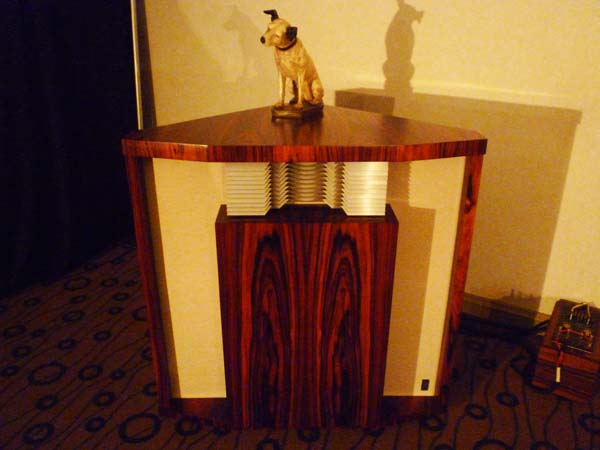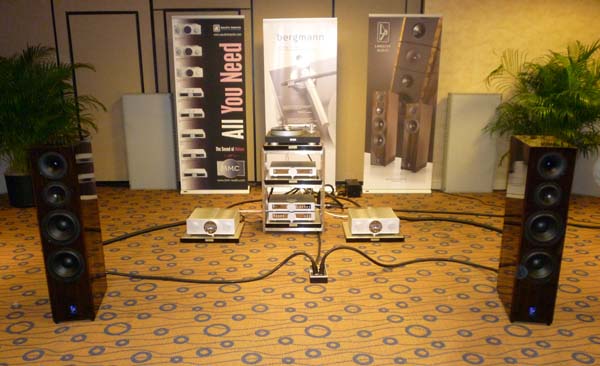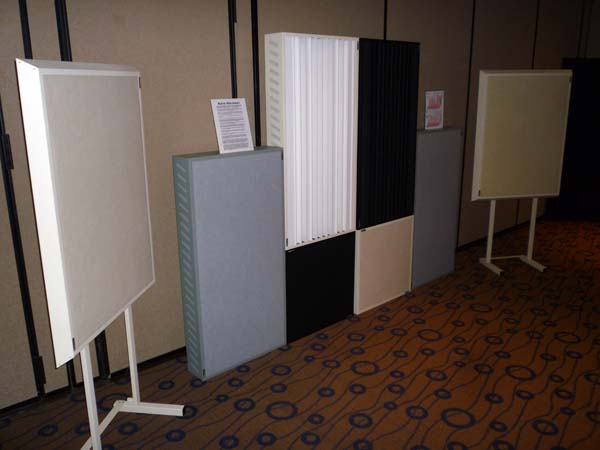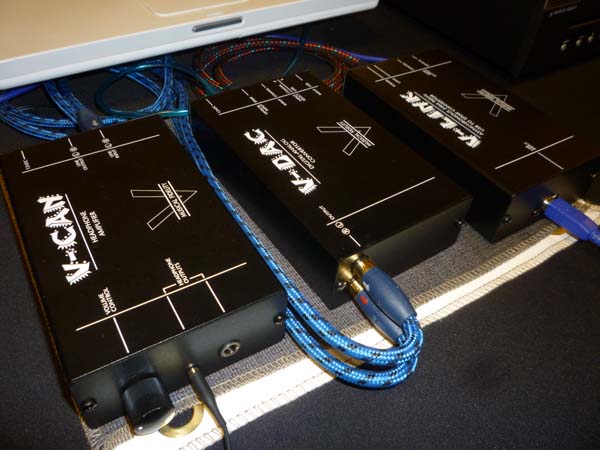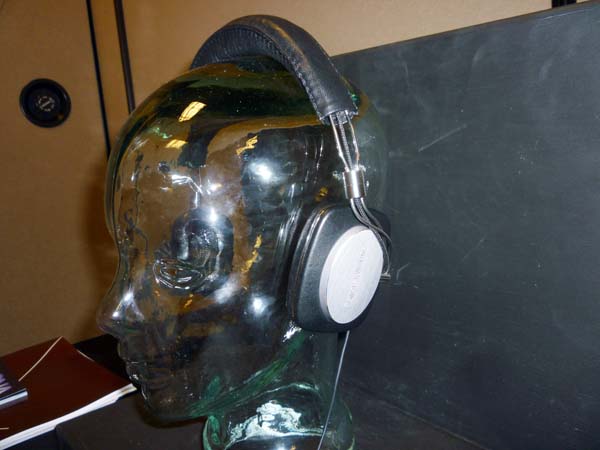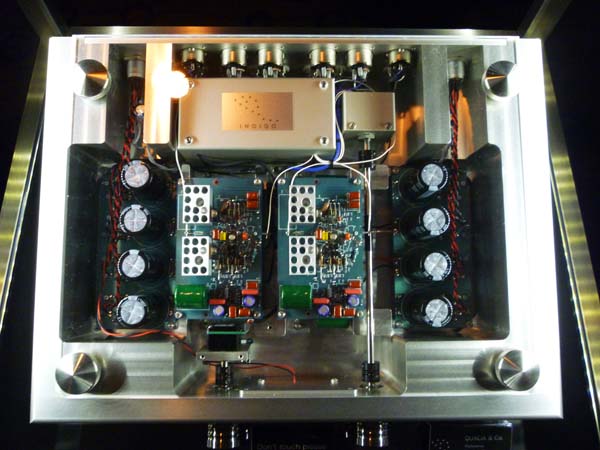LATEST ADDITIONS
The Hartsfield from Classic Audio Loudspeakers
Something about this speaker gets people feeling all romantic. When I walked into the room, I sat down behind a couple whose hands were joined and whose arms swung in the space between their separate chairs, happily and slowly, in time to the music. After they departed, their places were taken by a second couple. This time, however, the woman simply moved her seat as close as possible to her companion’s, creating a virtual love seat, so that the two could hold each other while the music played.
What the hell? Was this a hi-fi show or some sort of love fest?
I couldn’t blame them, though. The system was playing some extremely gorgeous, palm-in-eye-socket piece of violin music, and it sounded sweet, inviting, and nearly rapturous, with delicate, extended highs and easy, voluptuous mids.
Designer John Wolff said something about field-coils and 106dB...
Inside the BMC AMP M1 monoblock
BMC stands for Balanced Music Concept. The company was founded by Bernd Hugo and Carlos Candeias, two audio designers based in Germany. BMC’s products are designed in Europe, but manufactured in China to keep prices down. While $15,580 is a lot of money for most anyone, BMC products contain a number of interesting design quirks, including modular construction for easy upgrades, Superlink signal transmission mode which “skips any coding process” and is said to create a wider soundstage with increased detail resolution, and Digital Intelligence Gain Management which eliminates the need for a preamplifier and allows a DAC to connect directly to an amplifier.
Whatever. Just look at the amp’s innards. The level of construction and detail look heroic! I wouldn’t want to make one of these things, but listening to it sure was fun.
Outside the BMC AMP M1 monoblock
Aaudio Imports and Cruze First Audio
The system was made of Lansche No. 5.1 loudspeakers ($45,000/pair); BMC AMP M1 monoblock power amplifiers ($15,580/pair), BDCD1 belt-drive CD player/transport ($5790), DAC1 PRE D/A converter/preamp ($5790), and MCCI MC phono preamp ($3890); Bergmann Magne turntable and tonearm ($12,000); Stage III Mantikor speaker cables ($16,500/2.5 m), Gryphon interconnects ($6300/1m), and Analord Prime phono cable ($2900); Stage III Vortex ($2400/1.5m), Monotaur ($4000), and Zyklop ($6000/1.5m) power cords; Weizhi PRS-6 Pure power distributor ($3200); and Acapella Fondato Silenzio base ($3100) and LaMusika Puck/3 couplers ($490).
I sort of just zoned out in this room, nodding my head to the music, which transported me easily to some comfortable, smoky jazz club in 1950s New York City.
The Atlanta Audio Video Club
All those who attended Axpona were fortunate to have the Atlanta AV Club on hand, volunteering their time and providing many kind smiles. Members were stationed at desks throughout the exhibit areas, directing attendees to showrooms, answering questions, promoting raffles, and simply adding cheer to the event.
It was immediately obvious that members of the Atlanta AV club were eager to share their enthusiasm for hi-fi and music. Surrounded by this sort of passion and dedication to music and sound, we can be sure that the hobby is in very good hands.
RealTraps All Around
Musical Fidelity V-Series
Evolution Home Theater
While in the Evolution Home Theater room, I enjoyed speaking with Andy Ritz, whose Ritz Interiors offers a wide selection of solutions for room treatments, specializing in whole-room custom treatments but also happy to provide single panels for smaller jobs, each project available with customizable fabrics and designs for “a true theater look and feel.”
I also enjoyed chatting with B&W’s Eric Joy, who told me that the company’s new P5 headphones (seen here) have been a great success. Indeed, I’ve even started seeing people in NYC sporting the good-looking headphones. At just $299, the P5 might offer the discerning music lover a fine alternative to Monster’s Beats by Dr. Dre headphones.
I sat down and listened to a system made of the P5, along with a suite of Musical Fidelity V-Series components—V-CAN headphone amp, V-DAC, and V-Link asynchronous 24/96 USB to S/PDIF converter—tied to one another and to an Apple iBook G4 by AudioQuest cables. There was nothing muddy about Muddy Waters singing “You Can’t Lose What You Ain’t Never Had.” (So true.) The sound was perhaps a little laidback, smooth, and seductive, with a good sense of air around Muddy’s voice, a weighty, well-defined bass, and great tone to the guitar.


